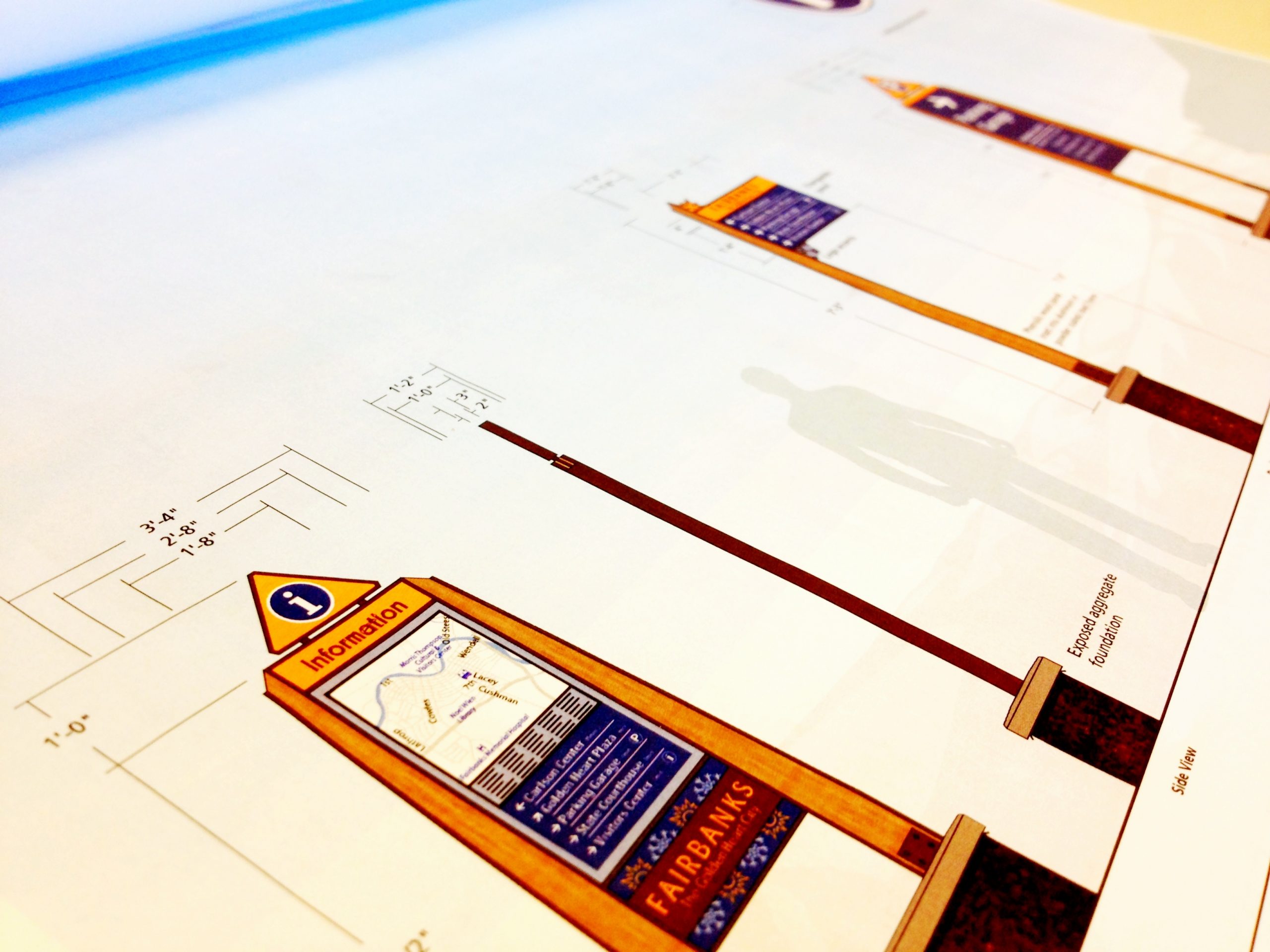Yesterday I attending the final committee meeting for the Wayfinding project in downtown Fairbanks. This sort of design process is something which I have no experience with so it was quite interesting to be able to sit in and observe part of the process. FMATS has a page up about this project that includes links to the contractors they are working with, if you’re curious to check them out. I’m fascinated with planning processes for populated environments.
My initial interest in this project was if there was any plan to integrate an augmented reality component into the final product. I had hoped to potentially connect with other local Fairbanksans interested in AR, but on this particular project there is no formal plan to include it. Of course, this got me thinking about wayfinding and city planning and what AR offers cities and municipalities in these contexts. As an increasing number of residents and visitors use their mobile devices to find and navigate to destinations, shouldn’t planning strategies for incorporating mobile-based solutions be included in the development of wayfinding, signing, and development projects?
At the moment, the technical execution of setting up location-based AR to work in concert with a project is easily within the capabilities of someone with web development experience (example solutions here and here). The cost and time are similar as well. The challenges, as I see them right now, are most directly related to the infancy of the technology. AR platforms are not currently standardized, which means selecting a platform or set of platforms to develop on is a consideration that directly impacts development time. The most compelling challenge is that ANYONE can create AR associated with any business, industry, or interest. This is equally one of the greatest strengths of AR, but it is also a compelling argument for purposefully integrating “official” AR products that are branded and aligned with the goals and outcomes of projects. Follow-on considerations could be tied into marketing campaigns so that intended audiences are able to find the official AR products/resources. Yet another challenge here because patterns are still emerging for leading and educating users to find/install/use AR.
